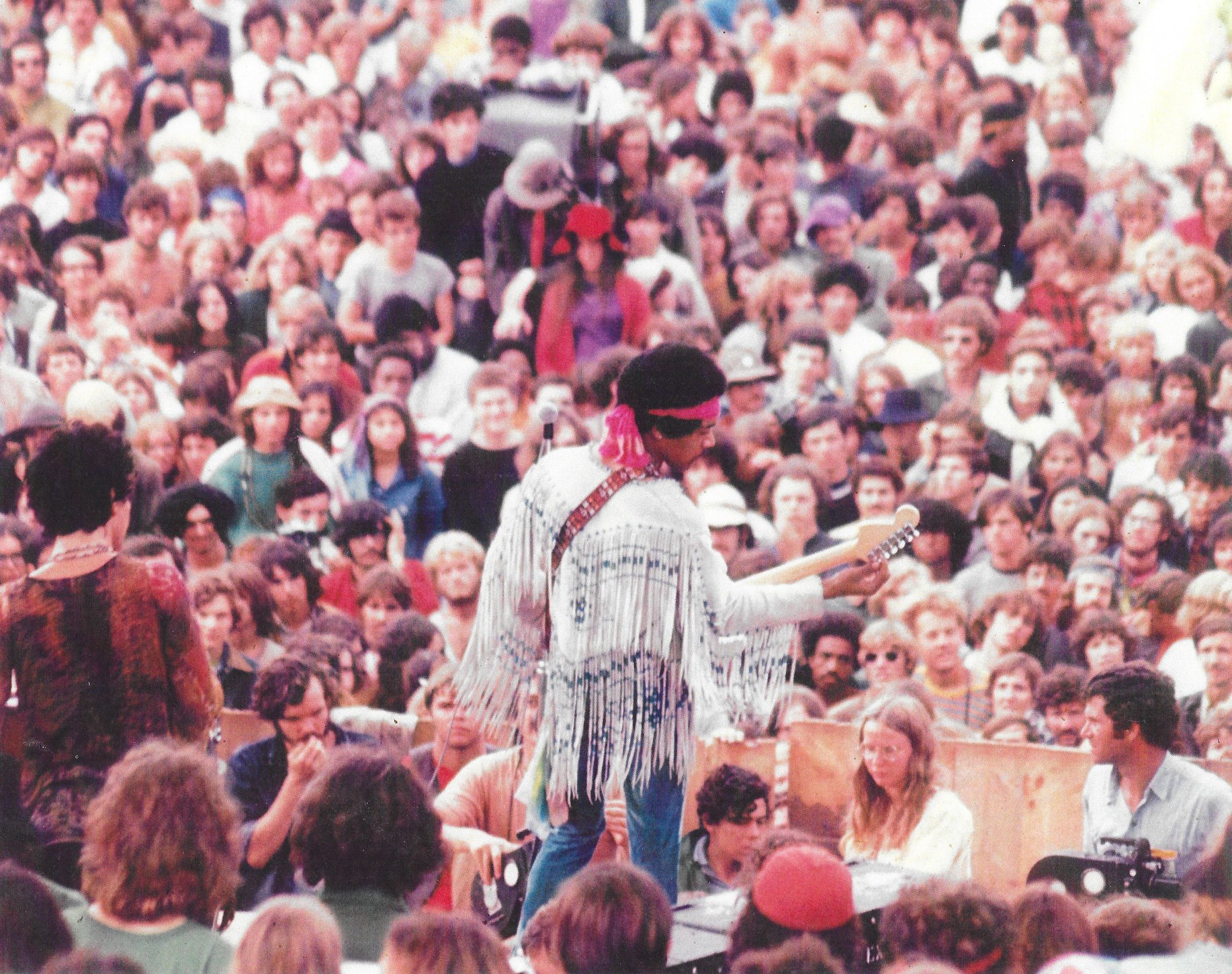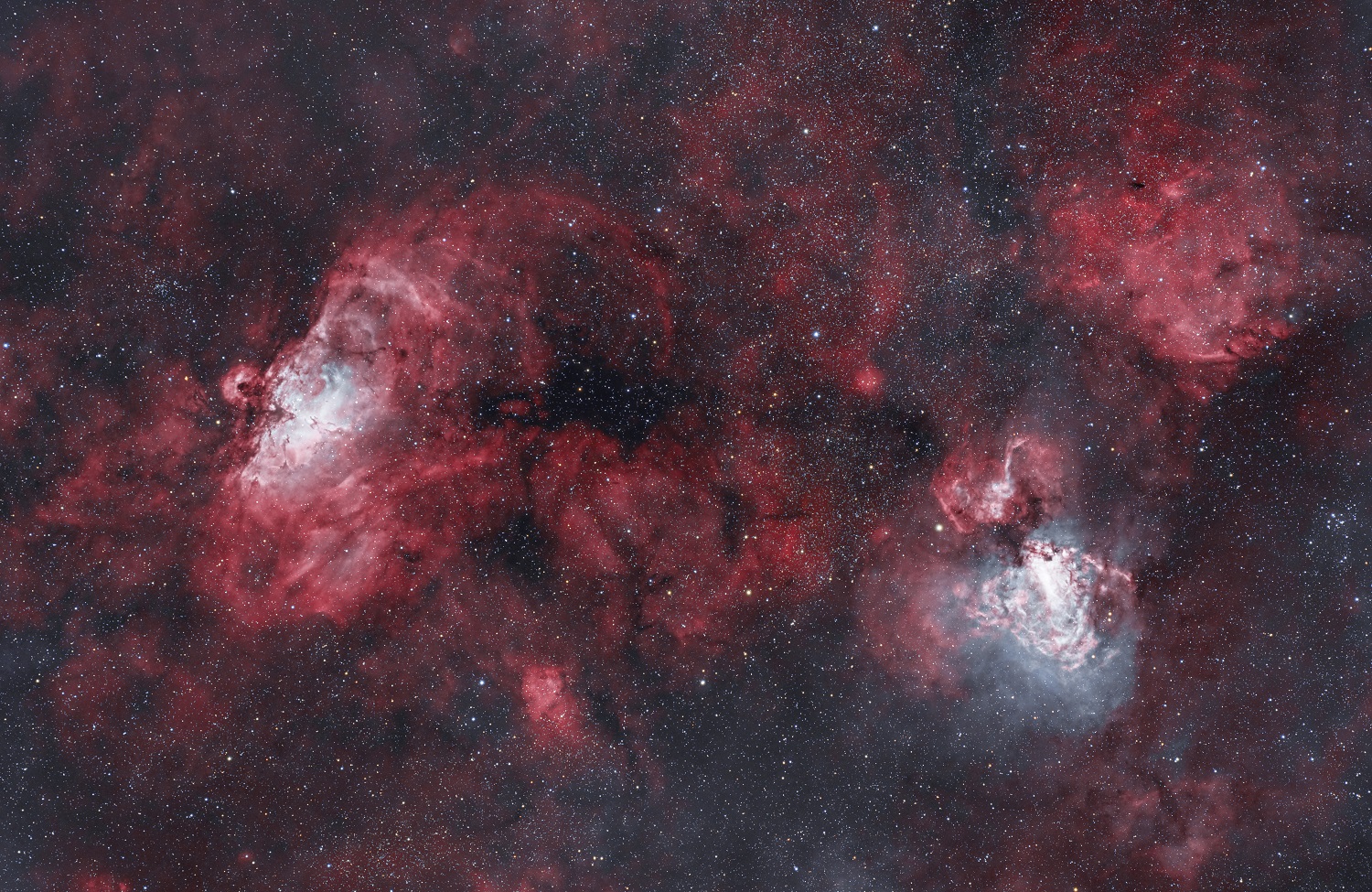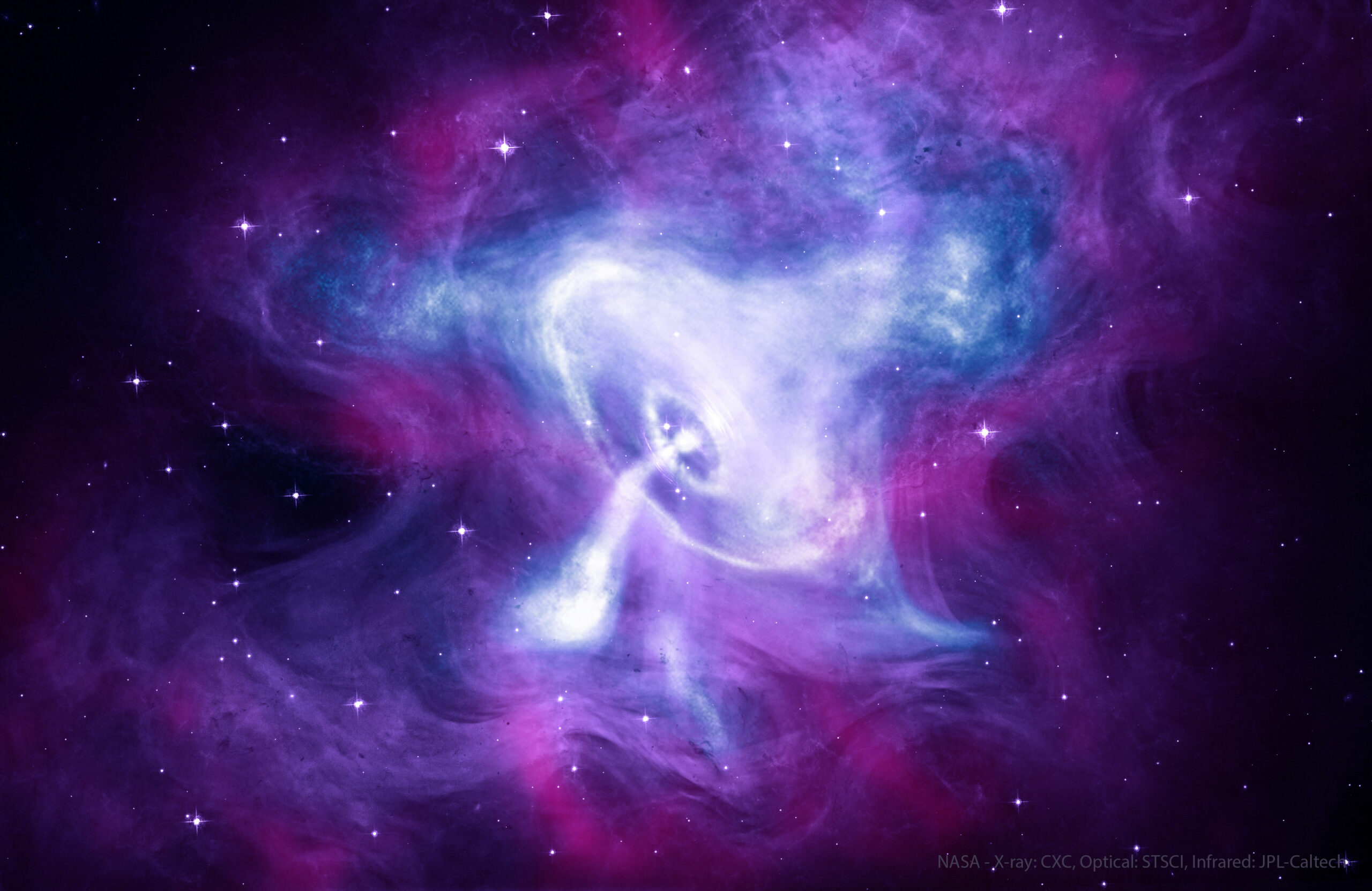Blog


The Eagle Nebula (catalogued as Messier 16 or M16, and as NGC 6611, and also known as the Star Queen Nebula) is a young open clusterof stars in the constellation Serpens, discovered by Jean-Philippe de Cheseaux in 1745–46. Both the “Eagle” and the “Star Queen” refer to visual impressions of the dark silhouette near the center of the nebula, an area made famous as the “Pillars of Creation” imaged by the Hubble Space Telescope. The nebula contains several active star-forming gas and dust regions, including the aforementioned Pillars of Creation. The Eagle Nebula lies in the Sagittarius Arm of the Milky Way.

Keith John Moon (23 August 1946 – 7 September 1978) was an English drummer for the rock band the Who. He was noted for his unique style of playing and his eccentric, often self-destructive behaviour and addiction to drugs and alcohol.
Moon grew up in Alperton, a suburb of Wembley, in Middlesex, and took up the drums during the early 1960s. After playing with a local band, the Beachcombers, he joined the Who in 1964 before they recorded their first single. Moon was recognised for his drumming style, which emphasised tom-toms, cymbal crashes, and drum fills. Throughout Moon’s tenure with the Who, his drum kit steadily grew in size, and (along with Ginger Baker) he has been credited as one of the earliest rock drummers to regularly employ double bass drums in his setup. Moon occasionally collaborated with other musicians and later appeared in films, but considered playing in the Who his primary occupation, and remained a member of the band until his death. In addition to his talent as a drummer, Moon developed a reputation for smashing his kit on stage and destroying hotel rooms on tour. He was fascinated with blowing up toilets with cherry bombs or dynamite, and destroying television sets. Moon enjoyed touring and socialising, and became bored and restless when the Who were inactive. His 21st birthday party in Flint, Michigan, has been cited as a notorious example of decadent behaviour by rock groups.
Moon suffered a number of setbacks during the 1970s, most notably the accidental death of chauffeur Neil Boland and the breakdown of his marriage. He became addicted to alcohol, particularly brandy and champagne, and acquired a reputation for decadence and dark humour; his nickname was “Moon the Loon”. After moving to Los Angeles with personal assistant Peter “Dougal” Butler during the mid-1970s, Moon recorded his only solo album, the poorly received Two Sides of the Moon. While touring with the Who, on several occasions he passed out on stage and was hospitalised. By the time of their final tour with him in 1976, and particularly during production of The Kids Are Alright and Who Are You, the drummer’s deterioration was evident. Moon moved back to London in 1978, dying in September of that year from an overdose of Heminevrin, a drug intended to treat or prevent symptoms of alcohol withdrawal.
Moon’s drumming continues to be praised by critics and musicians. He was posthumously inducted into the Modern Drummer Hall of Fame in 1982, becoming the second rock drummer to be chosen, and in 2011, Moon was voted the second-greatest drummer in history by a Rolling Stone readers’ poll. Moon was inducted into the Rock and Roll Hall of Fame in 1990 as a member of the Who.
more...Terje Rypdal (born 23 August 1947) is a Norwegian guitarist and composer. He has been an important member in the Norwegian jazz community, and has also given show concerts with guitarists Ronni Le Tekrø and Mads Eriksen as “N3”.
Rypdal was born in Oslo, Norway, the son of a composer and orchestra leader. He studied classical piano and trumpet as a child, and then taught himself to play guitar as he entered his teens. Starting out as a Hank Marvin-influenced rock guitarist with The Vanguards, Rypdal turned towards jazz in 1968 and joined Jan Garbarek‘s group and later George Russell‘s sextet and orchestra. An important step towards international attention was his participation in the free jazz festival in Baden-Baden, Germany, in 1969, where he was part of a band led by Lester Bowie. During his musical studies at Oslo university and conservatory, he led the orchestra of the Norwegian version of the musical Hair. He has often been recorded on the ECM record label, both jazz-oriented material and classical compositions (some of which do not feature Rypdal’s guitar).
His compositions “Last Nite” and “Mystery Man” were featured in the Michael Mann film Heat, and included on the soundtrack of the same name.
more...Gilbert Lloyd “Gil” Coggins (August 23, 1924 – February 15, 2004) was an American jazz pianist.
Coggins was born to parents of West Indian heritage. His mother was a pianist and had her son start on piano from an early age. He attended school in New York City and Barbados. In Harlem, New York City, he attended The High School of Music & Art.
In 1946, Coggins met Miles Davis while stationed at Jefferson Barracks in Missouri. After his discharge he began playing piano professionally, working with Davis on several of his Blue Note and Prestige releases. Coggins also recorded with John Coltrane, Sonny Rollins, Lester Young, Art Blakey‘s Jazz Messengers, Ray Draper, and Jackie McLean.
Coggins gave up playing jazz professionally in 1954 and took up a career in real estate, playing music only occasionally. He did not record as a leader until 1990, when Interplay Records released Gil’s Mood. He continued performing through the 1990s and 2000s until 2004, when he died from complications sustained in a car crash eight months earlier in Forest Hills, New York. Better Late Than Never, his second album recorded as a leader, was released posthumously.
more...https://www.youtube.com/watch?v=CSQHlsgSkio
more...The galaxy featured in this Picture of the Week has a shape unlike many of the galaxies familiar to Hubble. Its thousands of bright stars evoke a spiral galaxy, but it lacks the characteristic ‘winding’ structure. The shining red blossoms stand out as well, twisted by clouds of dust — these are the locations of intense star formation. Yet it also radiates a diffuse glow, much like an elliptical galaxy and its core of older, redder stars. This galactic marvel is known to astronomers as NGC 1156. NGC 1156 is located around 25 million light-years from Earth, in the constellation Aries. It has a variety of different features that are of interest to astronomers. A dwarf irregular galaxy, it’s also classified as isolated, meaning no other galaxies are nearby enough to influence its odd shape and continuing star formation. The extreme energy of freshly formed young stars gives colour to the galaxy, against the red glow of ionised hydrogen gas, while its centre is densely-packed with older generations of stars. Hubble has captured NGC 1156 before — this new image features data from a galactic gap-filling programme simply titled “Every Known Nearby Galaxy”. Astronomers noticed that only three quarters of the galaxies within just over 30 million light-years of Earth had been observed by Hubble in sufficient detail to study the makeup of the stars within them. They proposed that in between larger projects, Hubble could take snapshots of the remaining quarter — including NGC 1156. Gap-filling programmes like this one ensure that the best use is made of Hubble’s valuable observing time.

Donna Jean Thatcher Godchaux-MacKay (born August 22, 1947) is an American singer, best known for having been a member of the Grateful Dead from 1972 until 1979.
Donna Jean Thatcher was born in Florence, Alabama. Prior to 1970, she had worked as a session singer in Muscle Shoals, Alabama, eventually singing with a group called Southern Comfort and appearing as a backup singer on at least two #1 hit songs: “When a Man Loves a Woman” by Percy Sledge in 1966 and “Suspicious Minds” by Elvis Presley in 1969. Her vocals were featured on other classic recordings by Boz Scaggs and Duane Allman, Cher, Joe Tex, Neil Diamondand many others. She then moved to California and met future fellow Grateful Dead member Keith Godchaux, whom she married in 1970.
Donna introduced Keith to Jerry Garcia after Garcia’s performance at San Francisco’s Keystone Korner in September 1971. At the time, Donna Jean was not working as a musician. She joined the band shortly afterwards, remaining a member until February 1979.
more...Lex Humphries (August 22, 1936 – July 11, 1994) was an American jazz drummer. He worked with two musicians known for mixing world music with jazz: Sun Raand Yusef Lateef. As a member of Sun Ra’s “Arkestra” he appeared in the film Space Is the Place.
Humphries played on the Giant Steps sessions with John Coltrane. The renditions he and Cedar Walton recorded with Coltrane were released as alternative tracks in 1974. He was also the first drummer in the Jazztet, appearing on their first album, Meet the Jazztet, in 1960.
He died in Philadelphia in 1994, aged 57. The cause of death was undisclosed, but according to fellow drummer Mickey Roker, he was distraught in his later years due to marital problems and being separated from his son.
more...(Achille) Claude Debussy (French: [aʃil klod dəbysi]; 22 August 1862 – 25 March 1918) was a French composer. He is sometimes seen as the first Impressionistcomposer, although he vigorously rejected the term. He was among the most influential composers of the late 19th and early 20th centuries.
Born to a family of modest means and little cultural involvement, Debussy showed enough musical talent to be admitted at the age of ten to France’s leading music college, the Conservatoire de Paris. He originally studied the piano, but found his vocation in innovative composition, despite the disapproval of the Conservatoire’s conservative professors. He took many years to develop his mature style, and was nearly 40 when he achieved international fame in 1902 with the only opera he completed, Pelléas et Mélisande.
Debussy’s orchestral works include Prélude à l’après-midi d’un faune (1894), Nocturnes (1897–1899) and Images (1905–1912). His music was to a considerable extent a reaction against Wagner and the German musical tradition. He regarded the classical symphony as obsolete and sought an alternative in his “symphonic sketches”, La mer(1903–1905). His piano works include sets of 24 Préludes and 12 Études. Throughout his career he wrote mélodies based on a wide variety of poetry, including his own. He was greatly influenced by the Symbolist poetic movement of the later 19th century. A small number of works, including the early La Damoiselle élue and the late Le Martyre de saint Sébastien have important parts for chorus. In his final years, he focused on chamber music, completing three of six planned sonatas for different combinations of instruments.
With early influences including Russian and Far Eastern music, Debussy developed his own style of harmony and orchestral colouring, derided – and unsuccessfully resisted – by much of the musical establishment of the day. His works have strongly influenced a wide range of composers including Béla Bartók, Olivier Messiaen, George Benjamin, and the jazz pianist and composer Bill Evans. Debussy died from cancer at his home in Paris at the age of 55 after a composing career of a little more than 30 years.
more...Malachi Favors (August 22, 1927 – January 30, 2004) was an American jazz bassist who played with the Art Ensemble of Chicago.
“Favors’s tendency to dissemble about his age was a well-known source of mirth to fellow musicians of his generation”. Most reference works give his year of birth of 1937, but, following his death, his daughter stated that it was 1927.
Favors primarily played the double bass, but also played the electric bass guitar, banjo, zither, gong, and other instruments. He began playing double bass at the age of 15 and began performing professionally upon graduating from high school. Early performances included work with Dizzy Gillespie and Freddie Hubbard.By 1965, he was a founder of the Association for the Advancement of Creative Musicians and a member of Muhal Richard Abrams‘ Experimental Band.
At some point he added the word “Maghostut” to his name and because of this he is commonly listed as “Malachi Favors Maghostut”. Musically he is most associated with bebop, hard bop, and particularly free jazz.
Favors was a protégé of Chicago bassist Wilbur Ware. His first known recording was a 1953 session with tenor saxophonist Paul Bascomb. He made an LP with Chicago pianist Andrew Hill (1957). Favors began working with Roscoe Mitchell in 1966; this group eventually became the Art Ensemble of Chicago. Favors also worked outside the group, with artists including Sunny Murray, Archie Shepp, and Dewey Redman.[1]
Prominent records include Natural & Spiritual (solo bass, 1978)[1] and Sightsong (duets with Muhal Richard Abrams, 1975).[1] In 1994 he played with Roman Bunka(Oud) at Berlin Jazz Fest and recorded the ‘German Critics Poll Winner’ album, Color Me Cairo.
Favors died from pancreatic cancer in January 2004, at the age of 76
more...Sonny Thompson (probably August 23, 1916 – August 11, 1989), born Alfonso Thompson or Hezzie Tompson, was an American R&B bandleader and pianist, popular in the 1940s and 1950s.
There is some uncertainty over Thompson’s origins, as well as his birth name. Researchers Bob Eagle and Eric LeBlanc indicate that he was born in 1916 in Wilkinson County, Mississippi, but other sources state that he was born in 1923, either in Mississippi or in Chicago.
He began recording in 1946, and in 1948 achieved two #1 R&B chart hits on the Miracle label – “Long Gone (Parts I and II)” and “Late Freight“, both featuring saxophonist Eddie Chamblee. The follow-ups “Blue Dreams” and “Still Gone” also reached the R&B chart. By 1952 he had moved on to King Records, where he worked in A&R and as a session musician and arranger. At King, he had further R&B Top 10successes with the singer Lula Reed, the biggest hit being “I’ll Drown in My Tears“. Thompson married Reed sometime in the early 1950s. He continued to work as a session musician, and to perform with Reed into the early 1960s. He also had success as a songwriter, often co-writing with blues guitarist, Freddie King. Thompson died in 1989 in Chicago.
more...John Lee Hooker (August 22, 1912 or 1917 – June 21, 2001) was an American blues singer, songwriter, and guitarist. The son of a sharecropper, he rose to prominence performing an electric guitar-style adaptation of Delta blues. Hooker often incorporated other elements, including talking blues and early North Mississippi Hill country blues. He developed his own driving-rhythm boogie style, distinct from the 1930s–1940s piano-derived boogie-woogie. Hooker was ranked 35 in Rolling Stone‘s 2015 list of 100 greatest guitarists.
Some of his best known songs include “Boogie Chillen’” (1948), “Crawling King Snake” (1949), “Dimples” (1956), “Boom Boom” (1962), and “One Bourbon, One Scotch, One Beer” (1966). Several of his later albums, including The Healer (1989), Mr. Lucky (1991), Chill Out (1995), and Don’t Look Back (1997), were album chart successes in the U.S. and UK. The Healer (for the song “I’m In The Mood”) and Chill Out (for the album) both earned him Grammy wins as well as Don’t Look Back, which went on to earn him a double-Grammy win for Best Traditional Blues Recording and Best Pop Collaboration with Vocals (with Van Morrison).
Hooker’s date of birth is a subject of debate; the years 1912, 1915, 1917, 1920, and 1923 have all been suggested. Most official sources list 1917, though at times Hooker stated he was born in 1920. Information found in the 1920 and 1930 censuses indicates that he was actually born in 1912. In 2017, a series of events took place to celebrate the purported centenary of his birth. In the 1920 federal census, John Hooker is seven years old and one of nine children living with William and Minnie Hooker in Tutwiler, Mississippi.
more...more...At the core of the Crab Nebula lies a city-sized, magnetized neutron star spinning 30 times a second. Known as the Crab Pulsar, it is the bright spot in the center of the gaseous swirl at the nebula’s core. About twelve light-years across, the spectacular picture frames the glowing gas, cavities and swirling filaments near the Crab Nebula‘s center. The featured picturecombines visible light from the Hubble Space Telescope in purple, X-ray light from the Chandra X-ray Observatory in blue, and infrared light from the Spitzer Space Telescope in red. Like a cosmic dynamothe Crab pulsar powers the emission from the nebula, driving a shock wave through surrounding material and accelerating the spiraling electrons. With more mass than the Sun and the density of an atomic nucleus,the spinning pulsar is the collapsed core of a massive star that exploded. The outer parts of the Crab Nebula are the expanding remnants of the star’s component gasses. The supernova explosion was composite image of the Crab Nebula features X-rays from Chandra (blue and white), optical data from Hubble (purple), and infrared data from Spitzer (pink). Chandra has repeatedly observed the Crab since the telescope was launched into space in 1999. The Crab Nebula is powered by a quickly spinning, highly magnetized neutron star called a pulsar, which was formed when a massive star ran out of its nuclear fuel and collapsed. The combination of rapid rotation and a strong magnetic field in the Crab generates an intense electromagnetic field that creates jets of matter and anti-matter moving away from both the north and south poles of the pulsar, and an intense wind flowing out in the equatorial direction.
Steven Bruce Smith (born August 21, 1954) Whitman, MA, is an American drummer best known as a member of the rock band Journey across three tenures. Modern Drummer magazine readers have voted him the No. 1 All-Around Drummer five years in a row.In 2001, the publication named Smith one of the Top 25 Drummers of All Time, and in 2002 he was voted into the Modern Drummer Hall of Fame. He was inducted into the Rock and Roll Hall of Fame as a member of Journey on April 7, 2017.
more...More Posts
- Betraying Heros
- Science Reality
- Curley Russell
- Cosmo NGC 2359
- Tom Constanten
- Clarence Frogman Henry
- Buster Bennett
- Buster Harding
- Lenny Tristano
- World Fusion Tigran Hamasyan
- Daily Roots Prince Jammy
- Cosmo LDN 1235
- Big Daddy Kinsey
- Wilson Pickett
- Jose Mangual Sr
- Andy Narell
- Bill Frisell
- World Music Mohammed Reza Shadjarian & Ensemble Aref
- Daily Roots Ras Pidow
- Feed the Children

